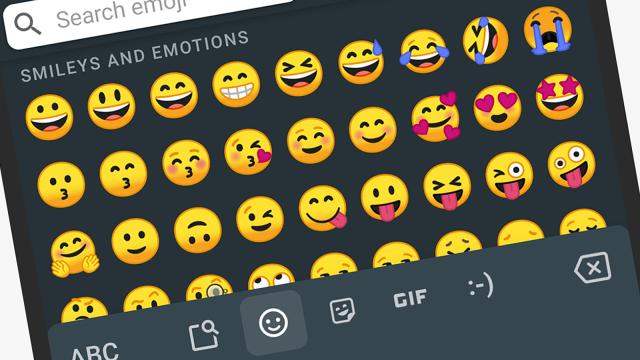Image: Gizmodo
We’ve got more emojis at our fingertips than ever before, but are your friends, relatives, colleagues, and favourite chatbots seeing the colourful cartoon symbols you think they’re seeing? There are several different reasons why emojis can get lost in translation between apps, devices, and platforms, and here we’ll explain how to stop it from happening.
First, some emoji basics: Underneath the emoji characters you see on your screens is the Unicode standard, a way of representing text and other characters that everyone agrees on. Unicode sets the basic emoji symbols that are available, and then Apple, Google, Microsoft, Samsung, and whoever else draw their own interpretation on top – which is why a smiley face looks different on an Android phone than it does on an iPhone.
It isn’t a huge communication problem if the hamburger on your screen isn’t the same as the hamburger on your friend’s screen, as long as it’s still a hamburger, and Unicode makes sure of that. Just be aware when composing your messages that some software makers interpret emojis in pretty different ways.
To add to the confusion, apps are free to use emojis internally in whatever way they like – so for example, WhatsApp displays the same emojis across both Android and iOS. That keeps everything consistent for WhatsApp users but it makes it harder to keep track of emoji designs when apps are making their own choices.
The best resource for checking up on this is Emojipedia, which even warns you if a particular symbol looks drastically different on different platforms. For example, check out the varying styles of emojis for framed picture, shooting star, and pistol (which looks decidedly toy-like on iOS).
Blocked emojis

Image: Screenshot
You’re probably not going to radically misunderstand someone just because an emoji was drawn differently, but the real problems start when emojis can’t be displayed at all, and just appear as empty boxes or some other neutral symbol. (By the way, if you need to find out what a mystery emoji is, the @bitmoji Twitter account can tell you.)
These boxes and question marks appear because emoji support on the sender’s device is not the same as emoji support on the device of the recipient. It could be two different OSes with differing levels of Unicode support; it could be an old client app without access to new emoji symbols; it could even be an outdated keyboard app or browser.
Of course if you’re tweeting out an emoji-packed message to millions of people, you can’t know that they’re all using up-to-date software to look at that tweet. The only real options to avoid being misunderstood are to not use emojis at all, or to fall back to the good old text-based emoticons (using characters to represent your emojis), or to stick to only the most basic emojis that just about every platform recognises.
If you’re dealing with a smaller group of people – your kids, for example – it’s much easier to make sure everyone is on a platform that’s up to speed with the newest Unicode standards. Typically, Unicode updates appear once a year, with a handful of new emojis in them, and it’s then up to the likes of Google and Apple to update their OSes accordingly. When new versions of Android and iOS are pushed out, that’s when emoji boxes and question mark placeholders tend to get more common.
It’s that Unicode support that’s crucial if you want your emojis to get through without problems, so if you’re a heavy user of the little pictures, then you might want to advise your contacts to keep their phones, computers, email clients and other software as up-to-date as possible to keep pace with you.
